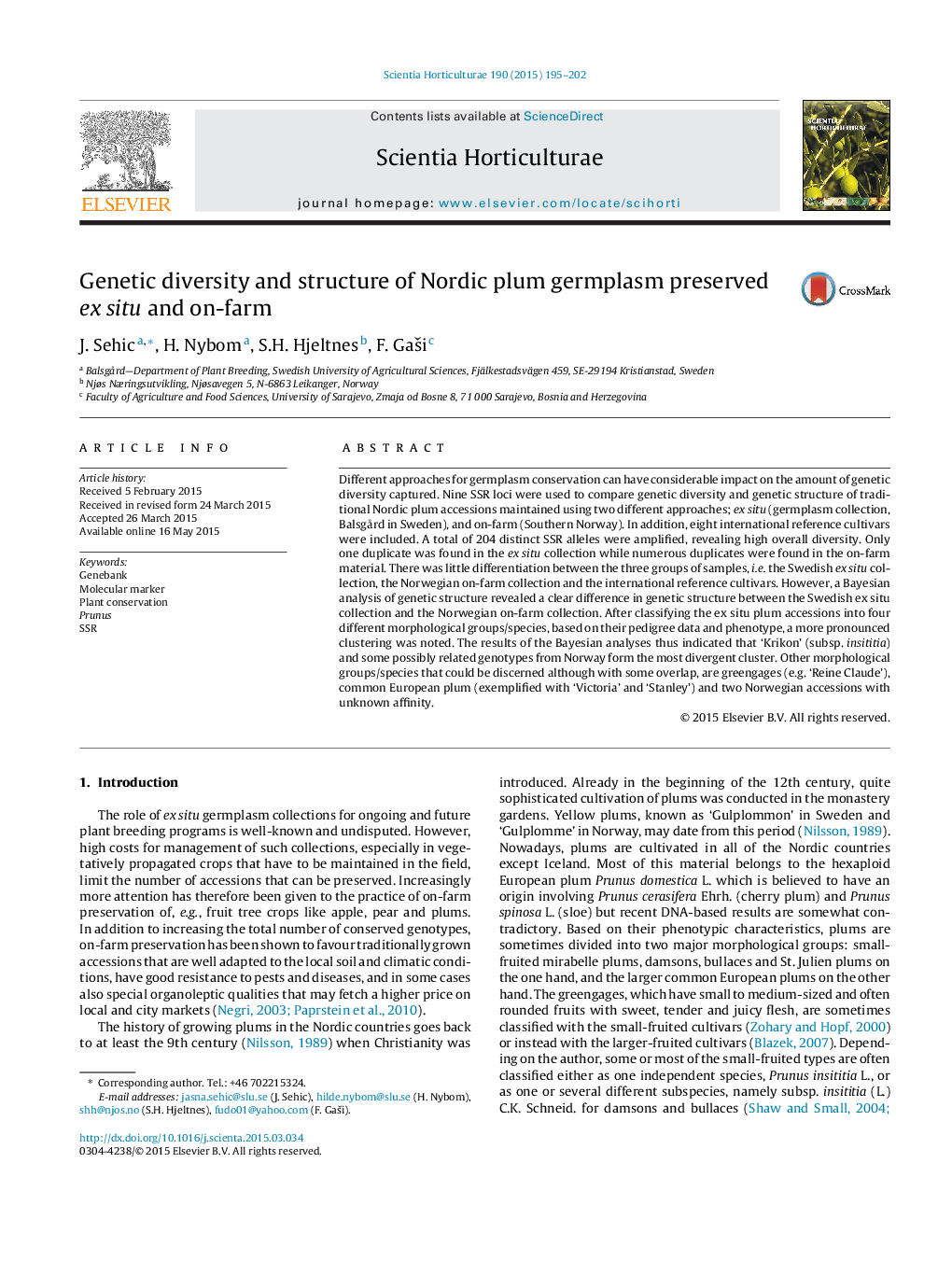| Article ID | Journal | Published Year | Pages | File Type |
|---|---|---|---|---|
| 4566165 | Scientia Horticulturae | 2015 | 8 Pages |
•We analysed 76 plum accessions with 9 SSR loci.•The on-farm accessions contain numerous duplicated genotypes.•Bayesian analysis-based clusters correspond to three taxonomic groups.•Ssp. insititia is more common in on-farm accessions than in ex-situ accessions.
Different approaches for germplasm conservation can have considerable impact on the amount of genetic diversity captured. Nine SSR loci were used to compare genetic diversity and genetic structure of traditional Nordic plum accessions maintained using two different approaches; ex situ (germplasm collection, Balsgård in Sweden), and on-farm (Southern Norway). In addition, eight international reference cultivars were included. A total of 204 distinct SSR alleles were amplified, revealing high overall diversity. Only one duplicate was found in the ex situ collection while numerous duplicates were found in the on-farm material. There was little differentiation between the three groups of samples, i.e. the Swedish ex situ collection, the Norwegian on-farm collection and the international reference cultivars. However, a Bayesian analysis of genetic structure revealed a clear difference in genetic structure between the Swedish ex situ collection and the Norwegian on-farm collection. After classifying the ex situ plum accessions into four different morphological groups/species, based on their pedigree data and phenotype, a more pronounced clustering was noted. The results of the Bayesian analyses thus indicated that ‘Krikon’ (subsp. insititia) and some possibly related genotypes from Norway form the most divergent cluster. Other morphological groups/species that could be discerned although with some overlap, are greengages (e.g. ‘Reine Claude’), common European plum (exemplified with ‘Victoria’ and ‘Stanley’) and two Norwegian accessions with unknown affinity.
